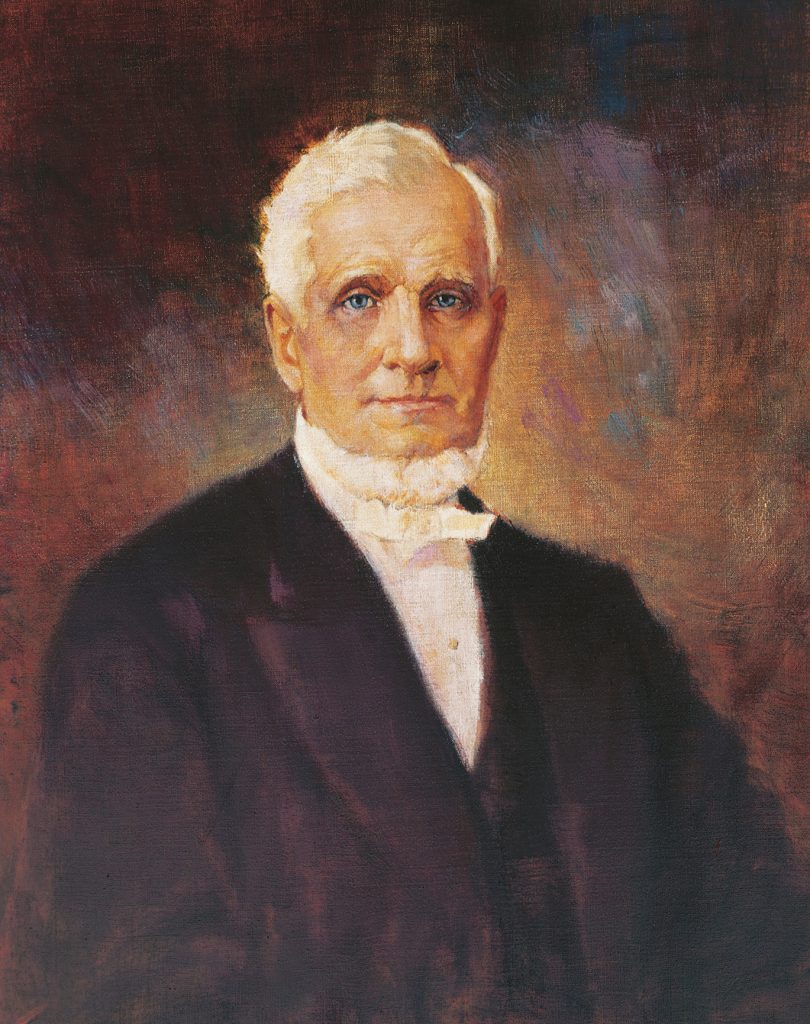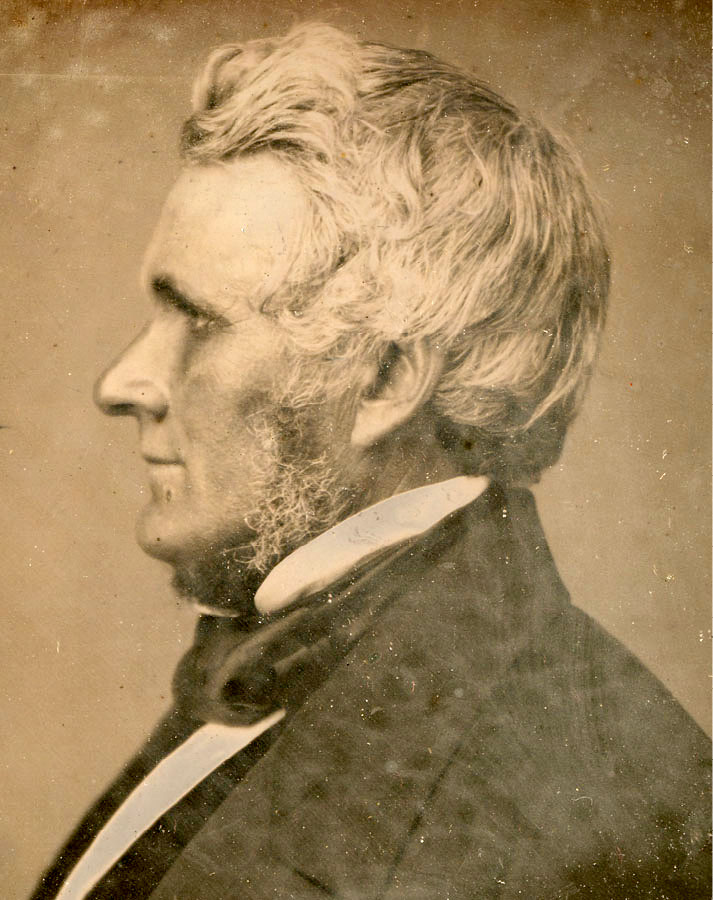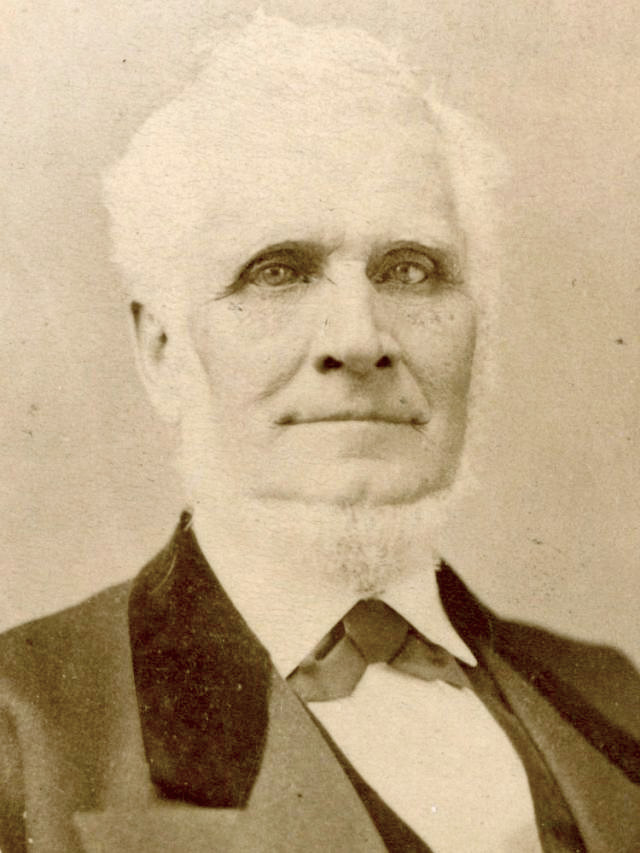COPYRIGHT 2026 SCRIPTURE CENTRAL FOUNDATION: A NON-PROFIT ORGANIZATION. ALL RIGHTS RESERVED. REGISTERED 501(C)(3). EIN: 39-2827600
John Taylor
(1808-887)






By Susan Easton Black
In his youth, John Taylor began his search for religious truth in his native land of England. “He saw, in vision, an angel … holding a trumpet to his mouth, sounding a message to the nations. The import of this vision he did not understand until later in life,” but it caused him to continue his pursuit for religious truths. Believing that the Methodist Church had greater spiritual enlightenment than the Church of England, at age sixteen he joined the Methodist Church and became an exhorter, or class leader. In 1832 John migrated to America and settled in Upper Canada. There he continued to be a class leader for the Methodists until his interpretation of their faith led to his dismissal. John then organized Bible study classes for those willing to listen to his religious views.
It was the message of the Restoration preached by Elder Parley P. Pratt that caused John to reevaluate his religious stance. “If I find his religion true,” said John. “I shall accept it, no matter what the consequences may be; and if false, then I shall expose it.” John compared the Restoration message of Elder Pratt with the Savior’s teachings in the New Testament. He said, “I made a regular business of it for three weeks, and followed Brother Parley from place to place.”1 John reached the conclusion that Elder Pratt was preaching the truth. On May 9, 1836, he was baptized by Elder Pratt.
John held many important positions in the Church after being ordained an elder and later a high priest. In the fall of 1837, he received word of his call to the Quorum of the Twelve Apostles (see D&C 118:6). Of this apostolic calling, John said, “I felt my own weakness and littleness; but I felt determined, the Lord being my helper, to endeavor to magnify it.”2 He was ordained an apostle on December 19, 1838, in Far West, Missouri, by Brigham Young and Heber C. Kimball.
His first assignment as an apostle was to share the gospel of Jesus Christ with those residing in the British Isles. John proved a successful missionary from 1839 to 1841, baptizing hundreds and being instrumental in opening Ireland to missionary work. He put in place a plan to assist thousands of British Saints to voyage across the Atlantic Ocean and up the Mississippi River to reach Nauvoo, Illinois.
When he returned to the United States, John took an active role in the civic affairs of Nauvoo. He served on the Nauvoo City Council, as a regent of the Nauvoo University, a colonel in the Nauvoo Legion, and as the editor of the Times and Seasons and Nauvoo Neighbor.
John was with the Prophet Joseph and his brother Hyrum Smith in Carthage Jail on June 27, 1844 (see D&C 135). In the afternoon of June 27, he sang “A Poor Wayfaring Man of Grief.” At 5:15 p.m., he was in the bedroom of the jail when Joseph and Hyrum were murdered. Four bullets entered John’s body in the deadly attack. He was taken to the Hamilton Hotel in Carthage, where his wounds were cared for until he could return to his family in Nauvoo.
Following the martyrdom of the Smith brothers, John followed the leadership of Brigham Young and the Quorum of the Twelve Apostles. Under the direction of Brigham Young, he served another mission to the British Isles and one to France. In Paris, France, John made arrangements for the translation of the Book of Mormon into French. Wanting to share the message of the Restoration with other European countries, he traveled to Germany, where he supervised the translation of the Book of Mormon into German. He next presided over a mission in the eastern states, publishing the newspaper The Mormon.
In May 1857 John returned to the Salt Lake Valley to prepare for what some were calling the Utah War. “If the earthquake bellows,” said John, “the lightnings flash, the thunders roll and the powers of darkness are let loose, and the spirit of evil is permitted to rage and an evil influence is brought to bear on the Saints, and my life with theirs, is put to the test—let it come.”3 When the threat of war subsided, John remained in the West. From 1857 to 1876, he served in the territorial legislature, the first five sessions as speaker of the House of Representatives. From 1868 to 1870, he was the probate judge of Utah County and in 1877 the superintendent of district schools.
His civic service in the Territory of Utah ended with the passing of Brigham Young in 1877. As the recognized leader of the Latter-day Saints, John devoted all his time and talents to building the Kingdom of God. He pushed forward the building of temples and regulated priesthood meetings and conferences held in the stakes of Zion. At the April 1880 general conference (a jubilee conference), he said, “It occurred to me, that we ought to do something, as they did in former times, to relieve those that are oppressed with debt, to assist those that are needy, to break off the yoke of those that may feel themselves crowded upon, and to make it a time of general rejoicing.”4
It was a time of rejoicing for Latter-day Saints in the Intermountain West—until the passage of legislative bills which outlawed the practice of plural marriage. In February 1885 John preached his last public sermon before going into hiding. In that sermon he said, “You will see trouble! trouble! TROUBLE enough in these United States. And as I have said before, I say today—I tell you in the name of God, WOE! to them that fight against Zion, for God will fight against them!”5 John then went into self-imposed exile to escape federal officers who sought his arrest. While exiled from his family and the Latter-day Saints, he wrote,
We are engaged in a great work, and laying the foundation thereof—a work that has been spoken of by all the holy prophets since the world was. … I pray God the Eternal Father that when we have all finished our probation here, we may be presented to the Lord without spot or blemish, as pure and honorable representatives of the Church and kingdom of God.6
On July 25, 1887, John died at the home of Thomas E. Rouche in Kaysville, Utah, at age seventy-eight. Etched on a silver plate on his coffin are the words “Holiness to the Lord. Rest in Peace.”
1. B. H. Roberts, The Life of John Taylor (Salt Lake City: Bookcraft, 1963), 38.
2. Roberts, The Life of John Taylor, 47–48.
3. Roberts, The Life of John Taylor, 273.
4. Roberts, The Life of John Taylor, 333.
5. Roberts, The Life of John Taylor, 383–84.
6. Roberts, The Life of John Taylor, 394–98.
Additional Resources
- Biography of John Taylor (josephsmithpapers.org)